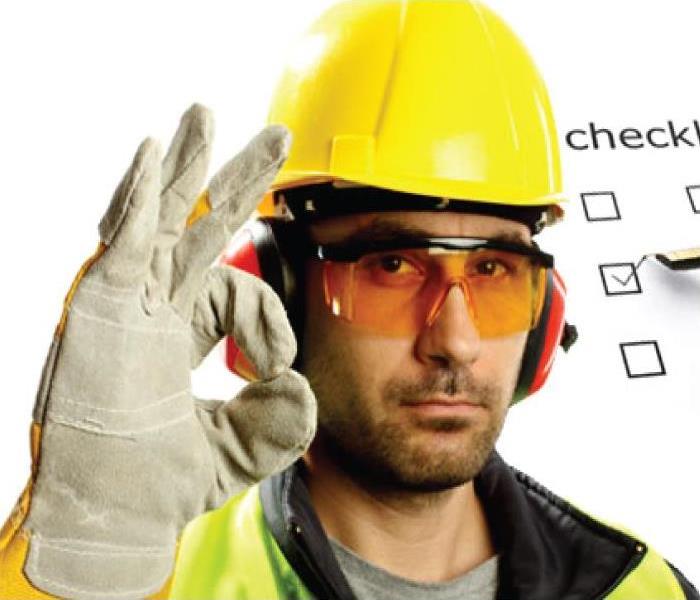The Importance of Personal Protective Equipment
7/1/2019 (Permalink)
Safety is a major issue for day laborers and skilled laborers. Each year, accidents happen frequently in the construction industry and often times it is due to the absence of Personal Protective Equipment (PPE) or failure to wear the provided PPE. PPE is equipment that will protect workers against health or safety risks on the job. The purpose is to reduce employee exposure to hazards when engineering and administrative controls are not feasible or effective to reduce these risks to acceptable levels. These hazard risks can be anything from wet floors to falling debris and everything in between. PPE includes items such as protective helmets, eye protection, high-visibility clothing, safety footwear, safety harnesses and, sometimes, respiratory protective equipment. Let’s explore some PPE commonly used on construction sites and their benefits:
- Head Protection
Hard hats are common on construction sites. Just passing by a site, you can usually identify workers by their hard hats. They are designed to protect against flying or falling objects that would otherwise impact or penetrate the worker. Some hard hats are equipped with accessories such as face shields and earmuffs. Hard hats should be well-fitted; those that are too large or too small are inappropriate for use.
- Eye and Face Protection
Eye and face protection are equally as important as head protection. Safety goggles, spectacles and full face shields can give you the protection needed for the eyes and face. Metal work, wood-work, hot-work and air-tool operations all require this type of protection. General laborers can also benefit from safety goggles since there is usually debris on construction sites.
- Respiratory protection
Respiratory protection is vital on sites where toxic substances are present. Sometimes what you can’t see can hurt you. Respiratory protections like respirators are designed to protect you from dust, fumes, paint spray, pesticides and other dangerous substances that could cause permanent impairment. Respiratory protection should be used in environments with air contaminants. In work environments, respirators are relied upon when adequate ventilation is unavailable or other engineering control systems are not feasible or inadequate.
- Hand & Skin protection
Construction jobs typically require the use of hands. Each year, around 150,000 hand injuries are reported. Occupational skin diseases such as contact dermatitis, skin cancers, and other skin injuries and infections are the second most common type of occupational disease and can be very costly. Because a lot of work is done with the hands, gloves are an essential item in providing skin protection. Some examples of gloves commonly used as PPE include rubber gloves, cut-resistant gloves, chainsaw gloves and heat-resistant gloves. Using gloves helps to avoid hazards usually involved when working with chemicals, glass, sheet metal, electricity, hot materials or slippery objects.
- Hearing protection
Industrial noise is often discounted as an occupational hazard since it isn’t visible to the eye. However, 22 million workers in the United States are exposed to potentially harmful noise levels annually. According to the National Institute for Occupational Safety and Health, about 82% of occupational hearing loss cases occurred to workers in the manufacturing sector. The Occupational Safety and Health Administration establishes occupational noise exposure standards. NIOSH recommends that worker exposures to noise be reduced to a level equivalent to 85 dBA for eight hours to reduce occupational noise-induced hearing loss. Earplugs and earmuffs are common hearing protection tools. It is important to note that earmuffs are more effective in reducing high-frequency noise while earplugs are more effective for reducing low-frequency noise.






 24/7 Emergency Service
24/7 Emergency Service
